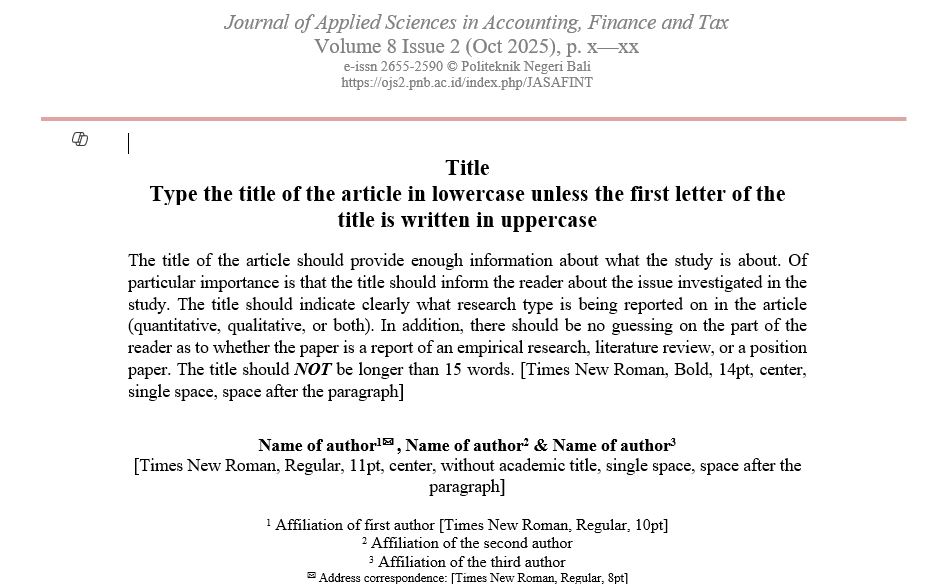Assessing the Financial Performance of Nias Local Goverment
DOI:
https://doi.org/10.31940/jasafint.v7i2.80-95Keywords:
financial statement analysis, financial performance measurementAbstract
This research aims to evaluate the financial performance of the Nias Regency Regional Government based on financial report data from 2013 to 2022. The data collection method used is the documentation method, and data analysis is carried out using financial ratio analysis. The research results show that the financial performance of the Nias Regency Regional Government from 2013 to 2020 has several characteristics. The level of regional financial independence is still low with an average of 83.41%, but is in the high category. Nias Regency's regional autonomy also has a very low category with an average of 13.16%. The ratio of the degree of fiscal decentralization in Nias Regency is relatively low with an average of 10.88%. However, the effectiveness of Nias Regency's original regional income (PAD) from 2013 to 2022 is classified as very effective with an average of 108.46%. The regional original income (PAD) efficiency ratio shows a very efficient category with an average of 0.21%. The regional tax efficiency ratio is also classified as very efficient with an average of 2.43%. Meanwhile, the contribution ratio of regionally owned enterprises (BUMD) shows a fairly good contribution with an average of 11.31%. Overall, analysis of the financial reports of the Nias Regency Regional Government shows that their financial performance is quite good, effective and efficient.







